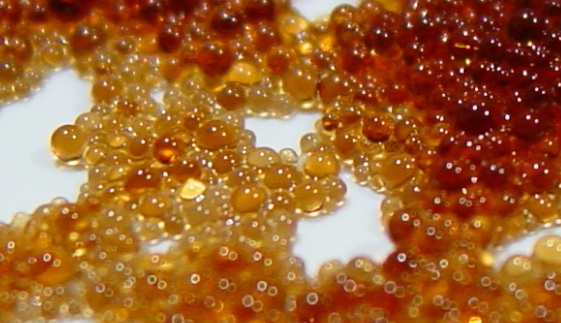|
Pedosphere
The pedosphere (from Greek ''pedon'' "ground" or "earth" and ''sphaira'' "sphere") is the outermost layer of the Earth that is composed of soil and subject to soil formation processes. It exists at the interface of the lithosphere, atmosphere, hydrosphere and biosphere. The pedosphere is the skin of the Earth and only develops when there is a dynamic interaction between the atmosphere (air in and above the soil), biosphere (living organisms), lithosphere (unconsolidated regolith and consolidated bedrock) and the hydrosphere (water in, on and below the soil). The pedosphere is the foundation of terrestrial life on Earth. The pedosphere acts as the mediator of chemical and biogeochemical flux into and out of these respective systems and is made up of gaseous, mineralic, fluid and biologic components. The pedosphere lies within the Critical Zone, a broader interface that includes vegetation, pedosphere, groundwater aquifer systems, regolith and finally ends at some depth in t ... [...More Info...] [...Related Items...] OR: [Wikipedia] [Google] [Baidu] |
Soil
Soil, also commonly referred to as earth or dirt, is a mixture of organic matter, minerals, gases, liquids, and organisms that together support life. Some scientific definitions distinguish ''dirt'' from ''soil'' by restricting the former term specifically to displaced soil. Soil consists of a solid phase of minerals and organic matter (the soil matrix), as well as a porous phase that holds gases (the soil atmosphere) and water (the soil solution). Accordingly, soil is a three-state system of solids, liquids, and gases. Soil is a product of several factors: the influence of climate, relief (elevation, orientation, and slope of terrain), organisms, and the soil's parent materials (original minerals) interacting over time. It continually undergoes development by way of numerous physical, chemical and biological processes, which include weathering with associated erosion. Given its complexity and strong internal connectedness, soil ecologists regard soil as an ecosystem. ... [...More Info...] [...Related Items...] OR: [Wikipedia] [Google] [Baidu] |
Lithosphere
A lithosphere () is the rigid, outermost rocky shell of a terrestrial planet or natural satellite. On Earth, it is composed of the crust and the portion of the upper mantle that behaves elastically on time scales of up to thousands of years or more. The crust and upper mantle are distinguished on the basis of chemistry and mineralogy. Earth's lithosphere Earth's lithosphere, which constitutes the hard and rigid outer vertical layer of the Earth, includes the crust and the uppermost mantle. The lithosphere is underlain by the asthenosphere which is the weaker, hotter, and deeper part of the upper mantle. The lithosphere–asthenosphere boundary is defined by a difference in response to stress. The lithosphere remains rigid for very long periods of geologic time in which it deforms elastically and through brittle failure, while the asthenosphere deforms viscously and accommodates strain through plastic deformation. The thickness of the lithosphere is thus considered to ... [...More Info...] [...Related Items...] OR: [Wikipedia] [Google] [Baidu] |
Hydrosphere
The hydrosphere () is the combined mass of water found on, under, and above the surface of a planet, minor planet, or natural satellite. Although Earth's hydrosphere has been around for about 4 billion years, it continues to change in shape. This is caused by seafloor spreading and continental drift, which rearranges the land and ocean."Our Changing Planet: an Introduction to Earth System Science and Global Environmental Change." Our Changing Planet: an Introduction to Earth System Science and Global Environmental Change, by Fred T. Mackenzie, 2nd ed., Pearson Education, 2011, pp. 88–91. It has been estimated that there are 1.386 billion cubic kilometres (333 million cubic miles) of water on Earth.Where is Earth's water? |
Ancient Greek
Ancient Greek includes the forms of the Greek language used in ancient Greece and the ancient world from around 1500 BC to 300 BC. It is often roughly divided into the following periods: Mycenaean Greek (), Dark Ages (), the Archaic period (), and the Classical period (). Ancient Greek was the language of Homer and of fifth-century Athenian historians, playwrights, and philosophers. It has contributed many words to English vocabulary and has been a standard subject of study in educational institutions of the Western world since the Renaissance. This article primarily contains information about the Epic and Classical periods of the language. From the Hellenistic period (), Ancient Greek was followed by Koine Greek, which is regarded as a separate historical stage, although its earliest form closely resembles Attic Greek and its latest form approaches Medieval Greek. There were several regional dialects of Ancient Greek, of which Attic Greek developed into Koi ... [...More Info...] [...Related Items...] OR: [Wikipedia] [Google] [Baidu] |
Soil Profile
A soil horizon is a layer parallel to the soil surface whose physical, chemical and biological characteristics differ from the layers above and beneath. Horizons are defined in many cases by obvious physical features, mainly colour and texture. These may be described both in absolute terms (particle size distribution for texture, for instance) and in terms relative to the surrounding material, i.e. 'coarser' or 'sandier' than the horizons above and below. The identified horizons are indicated with symbols, which are mostly used in a hierarchical way. Master horizons (main horizons) are indicated by capital letters. Suffixes, in form of lowercase letters and figures, further differentiate the master horizons. There are many different systems of horizon symbols in the world. No one system is more correct—as artificial constructs, their utility lies in their ability to accurately describe local conditions in a consistent manner. Due to the different definitions of the horizon symb ... [...More Info...] [...Related Items...] OR: [Wikipedia] [Google] [Baidu] |
Pioneer Species
Pioneer species are hardy species that are the first to colonize barren environments or previously biodiverse steady-state ecosystems that have been disrupted, such as by wildfire. Pioneer flora Some lichens grow on rocks without soil, so may be among the first of life forms, and break down the rocks into soil for plants.LICHEN BIOLOGY AND THE ENVIRONMENT, LICHENS OF NORTH AMERICA, Sylvia and Stephen Sharnoff/ref> Since some uninhabited land may have thin, poor quality soils with few nutrients, pioneer species are often hardy plants with adaptations such as long roots, root nodes containing Diazotroph, nitrogen-fixing bacteria, and leaves that employ transpiration. Note that they are often photosynthetic plants, as no other source of energy (such as other species) except light energy is often available in the early stages of succession, thus making it less likely for a pioneer species to be non-photosynthetic. The plants that are often pioneer species also tend to be ... [...More Info...] [...Related Items...] OR: [Wikipedia] [Google] [Baidu] |
Lichen
A lichen ( , ) is a composite organism that arises from algae or cyanobacteria living among filaments of multiple fungi species in a mutualistic relationship.Introduction to Lichens – An Alliance between Kingdoms . University of California Museum of Paleontology. Lichens have properties different from those of their component organisms. They come in many colors, sizes, and forms and are sometimes plant-like, but are not plants. They may have tiny, leafless branches ( fruticose); flat leaf-like structures ( foliose); grow crust ... [...More Info...] [...Related Items...] OR: [Wikipedia] [Google] [Baidu] |
Weathering
Weathering is the deterioration of rocks, soils and minerals as well as wood and artificial materials through contact with water, atmospheric gases, and biological organisms. Weathering occurs '' in situ'' (on site, with little or no movement), and so is distinct from erosion, which involves the transport of rocks and minerals by agents such as water, ice, snow, wind, waves and gravity. Weathering processes are divided into ''physical'' and ''chemical weathering''. Physical weathering involves the breakdown of rocks and soils through the mechanical effects of heat, water, ice, or other agents. Chemical weathering involves the chemical reaction of water, atmospheric gases, and biologically produced chemicals with rocks and soils. Water is the principal agent behind both physical and chemical weathering, though atmospheric oxygen and carbon dioxide and the activities of biological organisms are also important. Chemical weathering by biological action is also known as biolog ... [...More Info...] [...Related Items...] OR: [Wikipedia] [Google] [Baidu] |
Decomposition
Decomposition or rot is the process by which dead organic substances are broken down into simpler organic or inorganic matter such as carbon dioxide, water, simple sugars and mineral salts. The process is a part of the nutrient cycle and is essential for recycling the finite matter that occupies physical space in the biosphere. Bodies of living organisms begin to decompose shortly after death. Animals, such as worms, also help decompose the organic materials. Organisms that do this are known as decomposers or detritivores. Although no two organisms decompose in the same way, they all undergo the same sequential stages of decomposition. The science which studies decomposition is generally referred to as '' taphonomy'' from the Greek word ''taphos'', meaning tomb. Decomposition can also be a gradual process for organisms that have extended periods of dormancy. One can differentiate abiotic decomposition from biotic decomposition ( biodegradation). The former means "the degra ... [...More Info...] [...Related Items...] OR: [Wikipedia] [Google] [Baidu] |
Sedimentary
Sedimentary rocks are types of rock that are formed by the accumulation or deposition of mineral or organic particles at Earth's surface, followed by cementation. Sedimentation is the collective name for processes that cause these particles to settle in place. The particles that form a sedimentary rock are called sediment, and may be composed of geological detritus (minerals) or biological detritus (organic matter). The geological detritus originated from weathering and erosion of existing rocks, or from the solidification of molten lava blobs erupted by volcanoes. The geological detritus is transported to the place of deposition by water, wind, ice or mass movement, which are called agents of denudation. Biological detritus was formed by bodies and parts (mainly shells) of dead aquatic organisms, as well as their fecal mass, suspended in water and slowly piling up on the floor of water bodies ( marine snow). Sedimentation may also occur as dissolved minerals precipitate ... [...More Info...] [...Related Items...] OR: [Wikipedia] [Google] [Baidu] |
Ion Exchange
Ion exchange is a reversible interchange of one kind of ion present in an insoluble solid with another of like charge present in a solution surrounding the solid with the reaction being used especially for softening or making water demineralised, the purification of chemicals and separation of substances. Ion exchange usually describes a process of purification of aqueous solutions using solid polymeric ion-exchange resin. More precisely, the term encompasses a large variety of processes where ions are exchanged between two electrolytes. Aside from its use to purify drinking water, the technique is widely applied for purification and separation of a variety of industrially and medicinally important chemicals. Although the term usually refers to applications of synthetic (man-made) resins, it can include many other materials such as soil. Typical ion exchangers are ion-exchange resins (functionalized porous or gel polymer), zeolites, montmorillonite, clay, and soil humus. Ion ... [...More Info...] [...Related Items...] OR: [Wikipedia] [Google] [Baidu] |
Geochemistry
Geochemistry is the science that uses the tools and principles of chemistry to explain the mechanisms behind major geological systems such as the Earth's crust and its oceans. The realm of geochemistry extends beyond the Earth, encompassing the entire Solar System, and has made important contributions to the understanding of a number of processes including mantle convection, the formation of planets and the origins of granite and basalt. It is an integrated field of chemistry and geology. History The term ''geochemistry'' was first used by the Swiss-German chemist Christian Friedrich Schönbein in 1838: "a comparative geochemistry ought to be launched, before geognosy can become geology, and before the mystery of the genesis of our planets and their inorganic matter may be revealed." However, for the rest of the century the more common term was "chemical geology", and there was little contact between geologists and chemists. Geochemistry emerged as a separate discipline af ... [...More Info...] [...Related Items...] OR: [Wikipedia] [Google] [Baidu] |







